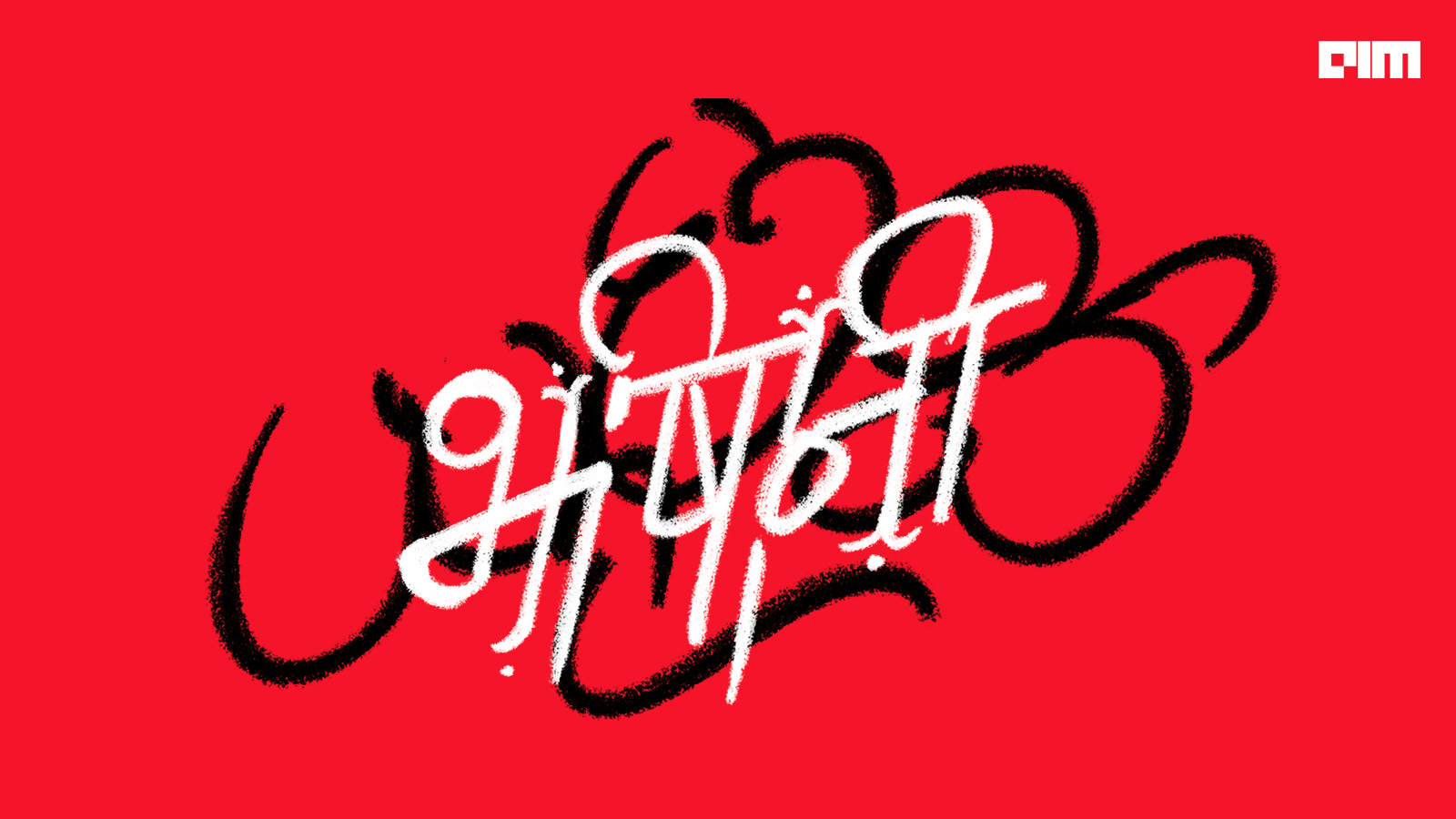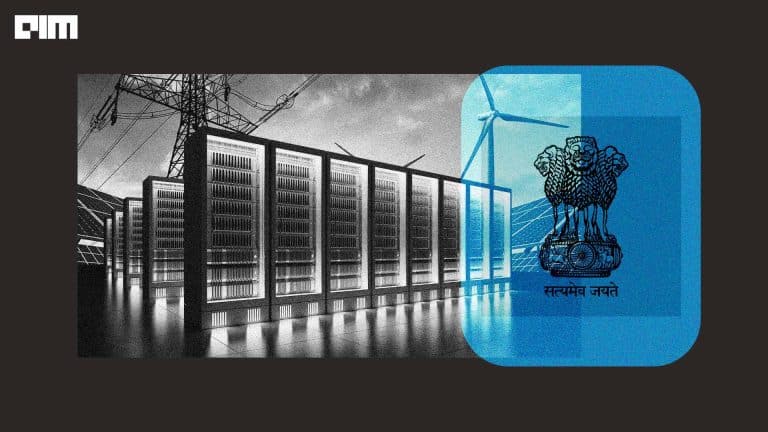|
Listen to this story
|
India, the world’s most populous nation with 19,500 languages and dialects, has only 10% English speakers. Hindi, spoken by 43.63% of Indians, is dominant. But a greater section of the population speaks different native languages as their mother tongue. Hence, to truly democratise AI in India, native language accessibility is indispensable.
This is where Bhashini comes in, an innovative AI solution aiming to bridge linguistic disparities. Bhashini leverages AI to break language barriers, enabling underserved communities to access government services seamlessly.
While large language models (LLMs) like the GPT models by OpenAI, which powers ChatGPT, excel in English, Bhashini seeks to democratise these technologies by offering them in native languages. One could contend that ChatGPT, with its 100 million users, made AI accessible globally with India being a significant user base. However, Bhashini, extended to more Indic languages, holds the promise of true AI democratisation.
Finding multiple use cases
Launched by Indian Prime Minister Narendra Modi in 2022, Bhashini is already finding use cases on multiple fronts. AskDISHA, a chatbot launched by the Indian Railway Catering and Tourism Corporation (IRCTC), is now leveraging Bhashini’s capabilities. Earlier, passengers were able to book tickets by conversing with the bot through voice and chat interface in English, Hindi, and Hinglish (a mix of English and Hindi). However, now the chatbot can converse in Gujarati and around 10 more languages are expected to be added to the AI-powered e-ticketing platform, Ankush Sabharwal, founder and CEO of CoRover.ai, the company that has developed the AskDISHA bot, told AIM.
Similarly, Ajay Singh Rajawat, manager at Bhashini division, Ministry of Electronics and Information Technology (MeitY) mentioned that the Nanaji Deshmukh Krishi Sanjivani Prakalp (PoCRA), a pioneering initiative under the department of agriculture, Government of Maharashtra, is using Bhashini to assist the farmers to have access to schemes, information, documents and programmes in their native language Marathi focused on climate resilience assistance.
From May 2023, the Department of Administrative Reforms and Public Grievances (DARPG) has also initiated the process of ranking States/UTs on the basis of their performance on the Centralised Public Grievance Redressal and Monitoring System (CPGRAMS) portal. For this, DARPG has integrated Bhashini with the CPGRAMS portal.
“This integration would facilitate the grievance redressal officers (GROs) to translate the regional language grievance texts into English and the complainants will have the option to view the final reply in both English and the translated native language, ensuring better understanding and communication between the citizens and concerned authorities,” the Ministry of Personnel, Public Grievances & Pensions, said in a statement.
Bhashini’s translation models
Moreover, Bhashini’s translation models such as IndicTrans and IndicTrans2, developed in association with AI4Bharat, an initiative of IIT Madras, have been leveraged by different tech companies, most notably, by KissanAI platform (previously KissanGPT). “We used a self-hosted version of IndicTrans in the early days of KissanAI. At that time, the models were not optimised for production, so when we started getting a lot of queries, we had to move to other models.”
“But now they have IndicTrans2, which is in an upgrade, and Bhashini is also providing API-based access, therefore, we are looking forward to using the updated model via API access again,” Pratik Desai, who developed the KissanAI platform told AIM.
Desai goes on to add that the Bhashini models are optimised for Indic languages and have better equality results compared to industry standard models such as Whisper and Azure for Indic language translation. So far, Bhashini’s models can do speech translation in 14 languages and text-to-text translation in the 22 official languages of India.
India boasts a plethora of government schemes and welfare programmes, each accompanied by its unique set of criteria and prerequisites. Navigating official websites can prove challenging, even impossible, for those who lack literacy or familiarity with the English or Hindi language.
“With Bhashini, all government reports/materials/communications can be generated in all the official languages. The core idea is to prevent language being a barrier for any industry,” Aravinth Bheemaraj, engineering leader, Tarento, told AIM.
Sabharwal, too, believes an initiative like Bhashini can be hugely beneficial for India given only 10 percent of the population speaks English and around 50 percent uses Hindi. “By providing access to digital initiatives and services in local languages, Bhashini empowers citizens who may have limited proficiency in English or other widely used languages. It ensures that language is not a barrier to accessing information and participating in digital platforms,” he said.
Picture an unlettered farmer in Uttar Pradesh, well-versed only in Kannauji and unable to read or write in English or Hindi, gaining access to government services and schemes through seamless conversation with a platform in his mother tongue. Bhashini can enable this and we have already started seeing use cases.
Jugalbandi, a chatbot developed in India powered by OpenAI’s GPT models with Bhashini’s translation model, is already benefiting people in rural areas. In a blog post, Microsoft said that Vandana, an 18-year-old resident of Biwan, Haryana, tested the chatbot in April. She asked about available scholarships in Hindi, specifying her field of study.
The chatbot provided a list and detailed eligibility criteria. Similarly, Abdullah Khan, a 26-year-old farmer in Biwan, has used Jugalbandi to help fellow farmers find out about government financial assistance programmes. Due to the Bhashini integration, the chatbot is available in 10 of the 22 official Indian languages.
In addition to promoting digital inclusion, Bhashini has the potential to enhance financial inclusion in India. The Reserve Bank of India (RBI) is integrating voice commands into the Unified Payments Interface (UPI), leveraging Bhashini’s capabilities. This initiative will enable users to make payments using a voice interface in both English and Hindi, with more languages planned for future inclusion.
Although smartphone usage is prevalent in rural areas, UPI adoption has been limited, partly due to lower literacy rates. RBI aims to bridge this gap through the voice interface, with Bhashini playing a pivotal role in this endeavour.
Benefiting tech ecosystem
An initiative like Bhashini is also hugely beneficial for the tech ecosystem, according to Sabharwal. “This technology is free and is incredibly inclusive. This nationwide effort has greatly benefited companies like ours, ensuring that our products are accessible and widely used across the country.”
The alternatives available in the market are expensive and lack accuracy, he added. At the same time, he also expects the accuracy level of the Bhashini models to only get better because it is hyper-localised. As the number of users increases and the ecosystem evolves, the accuracy will further improve.
However, speaking from a tech company’s perspective, Sabharwal believes more languages and dialects need to be added. Even adding foreign languages will be beneficial to India’s tourism ecosystem. Desai, on the other hand, is of the opinion that Bhashini should provide the capability and guides to fine-tune from a company’s own dataset. “If they are being developed as true open-source projects, documentation and contribution criteria need to be more streamlined like other popular open-source projects,” he said.



















































































